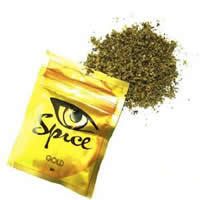In Sagamihara, Japan last week, a 26-year-old man stabbed 19 disabled people to death —the worst mass killing in the nation’s postwar history. The media focused on why Stoshi Uematsu, who had repeatedly threatened to commit such an attack, had been released from a mental hospital earlier this year. Jonathon Soble’s report in the New York Times included the following:
“The authorities said Mr. Uematsu had tested positive for marijuana during his hospitalization. The relationship between cannabis use and psychosis has long been debated, but many experts believe the drug can exacerbate the symptoms of people predisposed to schizophrenia and other mental illnesses.
“A Japanese television network, TBS, quoted an unidentified childhood friend of Mr. Uematsu’s as saying he continued to smoke marijuana after his release.
“Another person who knew Mr. Uematsu told the network that his personality had begun to change late in his college years. This person said that although he was usually friendly and outgoing, he began using synthetic marijuana-like drugs, covered his back in tattoos and showed bouts of aggressive behavior.”
The Times story doesn’t distinguish between marijuana, which is almost unobtainable and very expensive in Japan, and the “synthetic marijuana-like drugs” that one acquaintance specified were used by Uematsu. Cannabinoid drugs made by bootlegging chemists have a markedly less benign side-effect profile than the herb, and smoking them would also result in the “positive for marijuana” drug test administered at the hospital. O’Shaughnessy’s ran an interview with Dr. John Huffman, “the inadvertent inventor of Spice,” in 2009, but his warning hasn’t penetrated the consciousness of the New York Times’s reporters and editors.
It is very common to read that a given killer had been “under treatment for depression,” but the reporters never drill down to determine which pharmaceutical drug(s) might have induced the flip-out. Nor do the authorities ever say that a killer had been on Prozac or “Prozac-like drugs.” The experts analyze and speculate about the killer’s religious or political motivation, but when it comes to pharmaceutical triggers, they’re very protective of privacy —the drug manufacturer’s.





